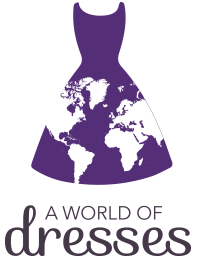If you like ethically sourced, yoga-inspired clothing, then you have probably heard of the brand “Om and Ah” which is focused on comfortable clothing with positive and uplifting messages. Their range is certainly feel-good, on multiple levels, but what does ethical clothing even mean? Can clothing be unethical?
If you have been on the Om and Ah Facebook page then you will likely have seen a range of posts that advertise their clothing range, obviously, but more importantly, is the message behind these posts which is one of kindness – to yourself, to each other, to the earth. In fact, “Be Kind” is one of their slogans, which rather sums up what ethical clothing is all about.
Who makes your clothes?
Because we live very much in a global village, we often forget that not everyone lives like we do. While we may be thrilled to pick up a great t-shirt for $5 at Walmart, few of us stop to think about how much it would actually cost to make that shirt. Even assuming that the huge discount the manufacture got on the materials, how about the marketing, packaging and shipping? Do you think a $5 t-shirt is going to be made in a factory with fruit boxes supplied for workers to have with morning tea?
Many in the western world have been taught to think that “$1 a day” is all that it takes to live in 3 world countries, so when reports of Asian workers in sweatshops who are getting paid $2 a day come out there is a response of “oh, but that’s a lot of money over there”. Actually, it’s not! Some of the factories that make your clothing are in China, but China is a country with extreme wealth and extreme poverty, India likewise. It is not just the wages, but the conditions of the workers, and the hours that they have to work. https://money.cnn.com/2016/05/31/news/companies/walmart-gap-hm-garment-workers-asia/index.html In fact, many of your fast fashion clothing is made by children. Our desire for great fashion at ever decreasing prices has sent us back to the early industrial era, with children being killed trying to earn enough to help feed their family.

Where does the material come from?
Although the human cost of clothing is of course hugely significant, we also need to consider the environmental cost, and this has become more of a concern as we all become aware of the need to make positive changes in the way we treat the world around us.
In the 80s we all managed to reduce our use of CFCs which were the popular propellant for a range of aerosols, this was done because scientists discovered that the ozone layer, which helps protect us the suns rays, was being depleted (learn more here). In fact, the ozone layer over New Zealand and parts of Antarctica actually had a hole in it – what this means is that when their weather department puts out a warning suggesting that burn time is 3 minutes, they mean that literally, if you go out without protection in the midday sun you will get sunburnt in 3 minutes, even on a cloudy day. However, the dramatic reduction of CFC use actually worked, and the ozone layer was given a chance to repair itself – it’s still a bit holey, but better than the early 80s.
What people who care about the environment want to know now is how sustainable the fabric is. Were native trees ripped out in order to plant cotton for t-shirts? Or are they using more sustainable crops such as hemp, which use less water and are easier to harvest? Water consumption is a huge concern, not just for people worried about drought conditions. When water is used in a manufacturing process it will generally also produce chemical infused waste water, and this will usually enter out main water supplies at some stage down the production line. It is very difficult to remove microplastics and many of the chemicals that are used in manufacturing – although there are a range of scientists (and the manufacturers themselves) who are looking into methods to make the process more bio friendly.
This was a collaborative post.





